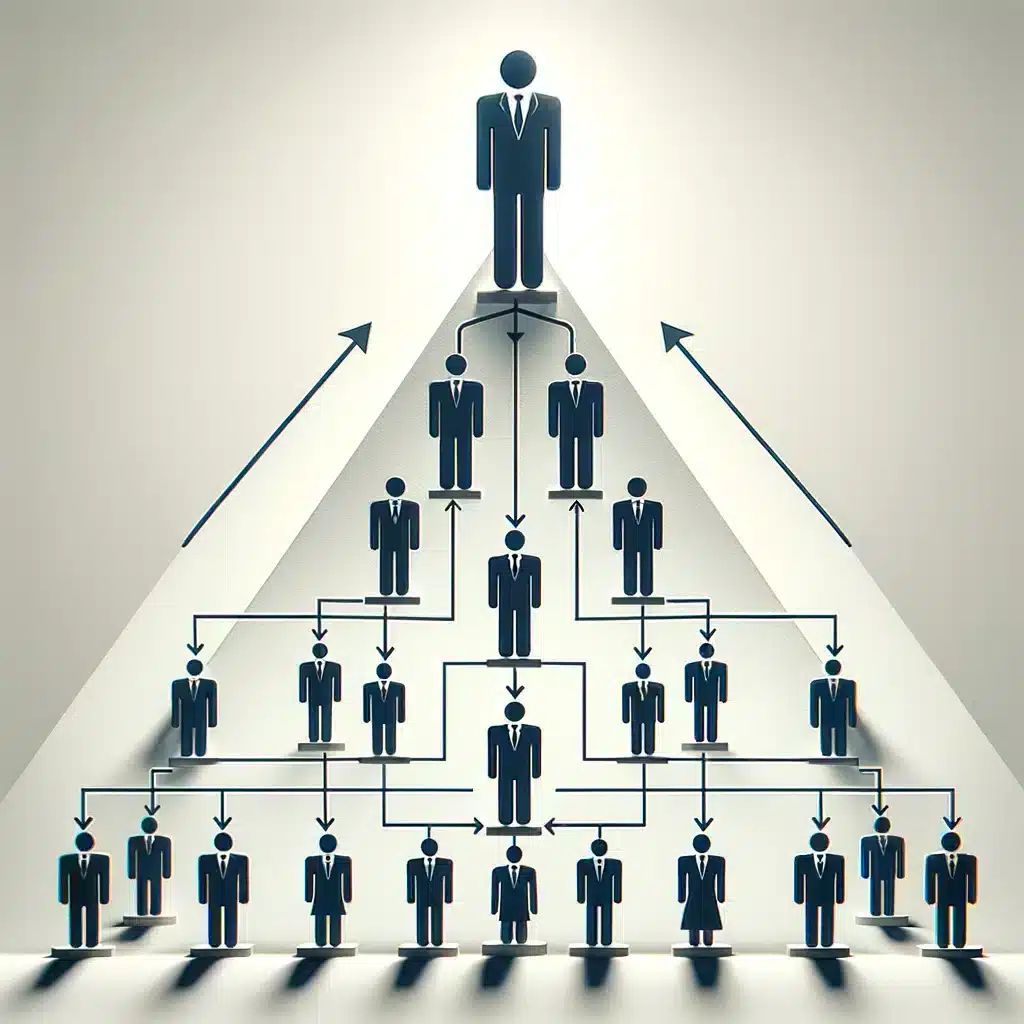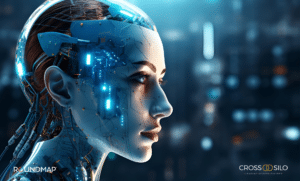In our quest to identify the most effective leadership style for steering organizations toward long-term success, we’ve recognized Distributed Leadership as the ideal approach. This model, emphasizing autonomy and shared responsibility across various organizational levels, aligns seamlessly with the dynamic needs of modern businesses.
However, transitioning from traditional hierarchical structures to a fully distributed leadership model can be challenging. To bridge this gap, we propose an intermediate step: Collaborative Leadership. This approach, which fosters teamwork and joint decision-making, can serve as a vital stepping stone, preparing the ground for a smoother transition to Distributed Leadership’s more decentralized and empowering realm.
In this post, we explore how organizations can navigate these two approaches, harnessing the strengths of each to create a robust, adaptable, and forward-thinking leadership culture.
Collaborative Versus Distributive Leadership
Choosing between “Distributed Leadership” and “Collaborative Leadership” involves considering subtle differences in their connotations and implications within an organizational context.
Here are some vital factors to consider:
- Conceptual Focus:
- Distributed Leadership: Emphasizes leadership roles and responsibilities distribution across various organizational levels. It suggests a system where leadership is not centralized but dispersed among many individuals.
- Collaborative Leadership: Focuses on the collaborative aspect of leadership. It implies a leadership style that heavily relies on teamwork, joint decision-making, and collective action.
- Implication of Power Dynamics:
- Distributed Leadership: Implies a more decentralized power structure, where authority and decision-making are spread out. This can be associated with empowering individuals at all levels to take on leadership roles.
- Collaborative Leadership: Suggests a leadership approach that values consensus and joint efforts. Power may still be centralized, but decisions are made collaboratively.
- Organizational Structure:
- Distributed Leadership: Often linked with flat or less hierarchical structures where multiple individuals or teams can lead initiatives or projects.
- Collaborative Leadership: This can be implemented in various organizational structures but requires a culture that supports open communication, shared goals, and mutual respect.
- Scope and Scalability:
- Distributed Leadership: This may have a broader scope as it can encompass various organizational roles, leading to scalability in larger or growing organizations.
- Collaborative Leadership: While it can be scalable, its effectiveness might depend on maintaining strong collaborative processes as the organization grows.
- Alignment with Organizational Values and Goals:
- Assess how each leadership style aligns with your organization’s core values and strategic objectives. Does one approach better support your mission, vision, and operational style?
- Impact on Innovation and Decision-Making:
- Consider which style fosters more significant innovation, adaptability, and effective decision-making in your organization’s context.
- Cultural Fit:
- Reflect on your organizational culture: Does it favor autonomy and individual leadership (leaning towards Distributed Leadership) or collective processes and teamwork (aligning more with Collaborative Leadership)?
In summary, while Distributed and Collaborative Leadership focus on de-emphasizing traditional top-down management, they approach it differently. Distributed Leadership is more about spreading leadership across the board, while Collaborative Leadership focuses on the joint efforts and consensus among leaders. The choice depends on which concept better aligns with your organizational structure, culture, and goals.
The Three Leadership Styles
- Centralized Command and Control: This traditional leadership model is characterized by decision-making authority concentrated at the top levels of an organization. It relies heavily on a hierarchical structure where directives flow downward.
- Collaborative Leadership: This approach begins to move away from strict top-down decision-making. It emphasizes teamwork, joint decision-making, and collective action, often involving leaders at various levels working together. While it decentralizes the decision-making process to some extent, it still often operates within a somewhat hierarchical structure.
- Distributed Leadership: This is a further step away from centralized control. Leadership is spread across the organization, and individuals at various levels have the autonomy and authority to make decisions. This model is less hierarchical than Collaborative Leadership and relies on the principle that leadership is a function that can be exercised by anyone in the organization, not just those in designated leadership positions.
In essence, Collaborative Leadership is a transitional phase where an organization begins to distribute decision-making and leadership responsibilities more broadly, but hasn’t yet fully embraced the more decentralized, widespread leadership model of Distributed Leadership. This transitional phase can be crucial for organizations evolving their leadership models, as it allows for a gradual shift in culture and practices.
A Practical Guide for Transitioning Leadership Styles
Transitioning from traditional to collaborative and distributed leadership involves a strategic and practical approach. Here are steps to implement this transition effectively:
- Assessment and Awareness:
- Begin by assessing the current leadership style and structure in your organization.
- Raise awareness among all members about the benefits of collaborative and distributed leadership models, emphasizing how these approaches can enhance innovation, decision-making, and employee engagement.
- Training and Development:
- Provide training sessions and workshops for leaders and employees focusing on skills essential for collaborative and distributed leadership, such as communication, teamwork, decision-making, and empowerment.
- Encourage leaders to mentor their teams in these new leadership styles.
- Cultural Shift:
- Cultivate a culture that values open communication, teamwork, and shared goals. This can be achieved through team-building activities and open forums for sharing ideas.
- Promote a culture of trust and respect, where employees feel valued and their opinions are heard.
- Redesigning Organizational Structure:
- Gradually move from a hierarchical structure to a more flat organization. This could start with small, cross-functional teams working on specific projects.
- Encourage collaborative decision-making within these teams.
- Empowerment and Autonomy:
- Begin to delegate more decision-making power to teams. Empower employees to take leadership roles in their areas of expertise.
- Develop a sense of ownership among team members, encouraging them to take initiative and lead in various capacities.
- Feedback Mechanisms:
- Implement regular feedback mechanisms to evaluate the effectiveness of the new leadership styles.
- Use surveys, one-on-one meetings, and team debriefs to gather insights on what is working and what needs adjustment.
- Iterative Process:
- Understand that this transition is an iterative process. Be prepared to make continuous adjustments based on feedback and outcomes.
- Celebrate successes and learn from challenges to keep improving the leadership model.
- Scaling Distributed Leadership:
- Once collaborative leadership becomes a norm, start scaling up to a distributed leadership model by giving individual employees and teams more autonomy.
- Encourage employees to take on leadership roles regardless of their formal position, fostering an environment where leadership is based on knowledge, expertise, and initiative rather than hierarchy.
- Continuous Support and Reinforcement:
- Provide ongoing support and resources for employees to grow into these new roles.
- Reinforce the values and practices of collaborative and distributed leadership regularly through internal communications, meetings, and leadership examples.
By following these steps, organizations can gradually and effectively transition from traditional leadership structures to more collaborative and eventually distributed models, aligning with modern business needs and workforce expectations.
The Pre-Conditions for Decentralized Leadership: Collective Insights and Empowered Action
As organizations transition from traditional, centralized leadership styles to more collaborative or distributed models, it is essential to approach this shift with caution and strategy. A critical aspect of this transformation is understanding that delegating authority requires more than just passing on decision-making power. It involves two critical components: Collective Insights and Empowered Action.
Collective Insights: This refers to ensuring that those who are being given authority also have access to the necessary contextual information and understanding. It’s about sharing the responsibility and the holistic view of the organization’s goals, challenges, and strategic direction. Decisions can be misaligned with the organization’s broader objectives without this comprehensive insight.
Empowered Action: Delegating authority means providing the necessary capabilities and resources to act effectively. This encompasses training, access to tools, and the empowerment to make decisions that have a real impact. Empowered action ensures that individuals or teams have the authority and the means to execute their roles effectively and contribute to the organization’s success.
Therefore, organizations must embed these elements into their delegation processes to move towards any decentralized leadership style. Doing so ensures a more cohesive, aligned, and effective decentralized decision-making structure, which is vital for the success of collaborative leadership models.
An Image Speaks Louder Than Words
To explain the differences between the three leadership styles – traditional, collaborative, and distributed leadership – an image may explain the differences better than words:

Image: A pyramid or a hierarchical tree structure.
Description: A single figure represents the top leader (like a CEO or manager) at the top of the pyramid or tree. Below this figure are successive layers of more minor figures, each representing lower levels of the hierarchy. Lines or arrows indicate a top-down flow of decisions and information.

Image: A roundtable or a network of interconnected nodes.
Description: A group of figures seated equally around a roundtable, symbolizing equality and joint decision-making. Alternatively, a network of interconnected nodes where each node represents a team member shows how everyone is connected and has equal input into decisions. Lines between the nodes show communication and collaboration paths.

Image: A web or network with multiple centers.
Description: A web-like or network structure where multiple nodes act as centers of activity or decision-making. Each node is connected to others, illustrating how leadership is distributed across the organization. Unlike the collaborative model, there are multiple hubs of activity, showing decentralized leadership.
Author
-
Edwin Korver is a polymath celebrated for his mastery of systems thinking and integral philosophy, particularly in intricate business transformations. His company, CROSS/SILO, embodies his unwavering belief in the interdependence of stakeholders and the pivotal role of value creation in fostering growth, complemented by the power of storytelling to convey that value. Edwin pioneered the RoundMap®, an all-encompassing business framework. He envisions a future where business harmonizes profit with compassion, common sense, and EQuitability, a vision he explores further in his forthcoming book, "Leading from the Whole."
View all posts Creator of RoundMap® | CEO, CROSS-SILO.COM





